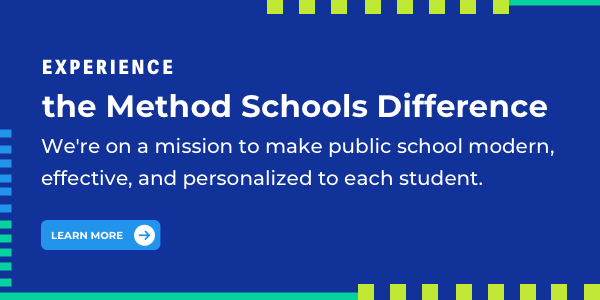Online High School Classes: The New Normal?
There’s no getting around it: The popularity of online coursework is skyrocketing. High schools are rushing to provide more and more online learning opportunities.
If you’re a parent, as high school moves from brick and mortar to digital devices, you may be feeling a bit caught off guard. Luckily, there are ways for you and your child to prepare for the new normal of online high school.
Wondering how?
Read on. We’ll dive into the future of education and explain how you can prepare your child for online high school classes.
How Is Education Changing?
It’s no secret that online education has exploded in recent years. According to the National Center for Education Statistics, nearly 60 percent of public high schools now offer some online classes.
And this shift online seems to be converging with broader social trends. According to Pew research, 95 percent of teens have access to a mobile device, and nearly half of those teens confess to being online “almost constantly.”
What does all of this mean for the future of education?
It appears trends are merging. Learners are becoming increasingly comfortable with technology, and online learning opportunities are growing rapidly. Simply put, all paths seem to be leading to more online classes.
Why Are Online High School Classes Increasing?
We mentioned that online education fits into the preferences of the next generation of learners, but there are broader benefits driving the online education boom. Here are a few reasons high schools are rushing to add online classes.
More Flexibility
Online learning makes it easier to deliver educational content in a way that fits a broad range of learning styles. For instance, it allows teachers to implement new techniques, such as flipped learning models, to break through to learners.
And it means students don’t have to spend their days chained to a desk. For students who participate in sports or those who want to travel for extracurricular events, online education is especially attractive. These students can continue learning while they’re on the road without missing out on classroom credits.
More Efficient Classrooms
Online learning systems let learners move at their own pace. That means they can advance more quickly, catch up, or pick up extra attention when they’re struggling with a tough subject. All the while, advanced online learning systems will feed educators information to help them identify and overcome academic barriers.
Beyond boosting in-class outcomes, online learning also prepares students for an increasingly online college environment and world. According to 2018 federal statistics, the number of post-secondary students taking online classes grew by more than 30 percent in a single year. By taking online high school classes, students can prepare for these online environments now. In turn, they’ll be set up to succeed in online coursework and careers in the future.
Easier Transitions to College
Perhaps the biggest advantage of online K12 learning is how it opens the door to post-secondary education. That’s especially true for students who face extra challenges navigating a traditional classroom. Here are some examples:
- Student athletes: Because online learning isn’t tied to a physical classroom, student athletes can travel for events without sacrificing their academics. By accessing NCAA and University of California (UC)-approved coursework from anywhere, they can qualify for college, and they won’t be docked for being out of town.
- Performers: Artists can perform without being penalized for missing class. Online learning lets them practice, attend shows, and manage schedules on their own time.
- Homeschoolers: Online homeschooling programs prepare students for a smooth transition to college without the hassle of major lifestyle adjustments. Essentially, students can qualify for post-secondary education from the comfort of their homes.
How Is Online Learning Impacting Student Performance?
As is the case with most new methods, online learning has been met with skepticism from some. And it is important to note that online learning needs to be student-focused in order to yield the best student performance results.
Still, online learning appears to be having a positive impact on student performance. According to statistics from University of the Potomac, online learning is giving teachers new avenues to deliver positive learning outcomes:
- It’s giving teachers more tools. Sixty-seven percent of college professors believe online resources are necessary teaching tools.
- It’s promoting advanced instruction. Nearly 70 percent of students say online instruction is as good as or better than traditional environments.
- It’s in high demand. Nearly 7 million students are enrolled in online courses.
As with all learning methods, there will be mixed results for online learners. However, it appears online learning is poised to provide even broader opportunities for students to learn in the future.
How Can Parents Prepare?
If you’re a parent, there are some simple ways to prepare for this shift toward online education. Here are a few tips.
Embrace online learning. It is natural to hesitate before making a big change, especially when it affects something as valuable as your child’s education. But the sooner you’re able to accept and familiarize yourself with new technology, the better. Take time to research the advantages of online education and advanced online curricula. Not only will this make it easier to support your student, but you’ll also know what to look for when you’re sifting through the best online education resources.
Research online models and curricula. Even if you aren’t tech-savvy, you can brush up on the best online teaching programs out there. By researching the top online models and curricula currently in use, you’ll learn which schools will deliver the best results.
Build a positive at-home learning environment. Online learners can bypass the distractions of the traditional classroom, but minimizing at-home distractions is up to you. As your student picks up more online coursework, make sure they have designated spaces that promote focus and productivity.
How Can Counselors Prepare?
Parents aren’t the only ones who need to adjust to online environments. Counselors still need to prepare students for college and post-secondary opportunities within this changing landscape. When it comes to online programs, a little preparation for counselors now can go a long way in the future. Here are some tips for counselors.
Check accreditation. With so many new schools jumping into online spaces, it is important to make sure the school’s curriculum and methods are backed by accrediting bodies. If you’re guiding students toward online programs, make sure those programs are accredited and trusted.
Review credit transfer. It does little good to point students to supplemental online programs when the credits don’t qualify them for post-secondary opportunities. That’s why counselors should make sure an online curriculum is approved by established entities, such as the University of California system.
Check athletic eligibility. If your students are interested in participating in athletics after high school, you’ll want to run through online programs with a fine-tooth comb. Curriculum should include coursework approved by major national bodies, such as the NCAA.
Stay Ahead of Online Trends
Curious about online education? We’re here to help answer your questions. Method Schools has long been at the forefront of the online education boom. Here’s more about Method Schools:
- We’re accredited by the Western Association of Colleges and Schools (WASC).
- Our online curriculum is aligned with the University of California (UC) system and NCAA.
- We focus on small class sizes.
- We use advanced SmartFox technology and the area’s top teachers to deliver self-paced, personalized education.
Want to see how online education can help your student? Talk with one of our education experts today.




-1.svg)
-1.svg)
.svg)
.svg)
.svg)

.svg)










.svg)
.svg)





